Writing a Credible Thesis Methodology Section
If you got acquainted with what thesis format includes, you must have made an assumption that such part of your paper as the thesis methods will require special attention. It is true, as good explanation and description of the methodology used is what makes the whole study credible in the eyes of the reader. Effectively developed methodology chapter will make your paper much stronger, and support the study results. On the contrary, the whole paper will be ruined by only the badly written methods section, no matter how good the study is itself.
As you understand, to get the maximum of chances for success, it’s necessary to polish the thesis methods section until it is 100% perfect. For this purpose, use the guidelines provided here by MasterPapers.com professional writers. These pieces of advice are constantly used by our writing team when preparing theses for our customers. As the result is always the success of the paper, you can confidently rely on our help and use the following tips when writing the methodology chapter of your thesis.
What the Methodology Chapter Includes
Here is the list of what information should necessarily be included in the methodology section of your paper.
Thesis methods:
• Make the results of the research seem believable for the reader
• Enable other researchers replicate your study to check the results
• Describe the theoretical background of the study, procedures and materials used when conducting the experiment
• Provide the calculations, explain techniques, and describe the equipment used
• Include the limitations and assumptions explanations, as well as provide the validity range
• Refer to the special software used in experiment procedures or for calculations in case it was applied.
Four Steps to Effectively Describe Thesis Methods
1. Determine the problem you are researching/ the question you’re trying to answer/ the subject you’re studying. Do not go deep into details; make a short but sustainable overview. This would give the reader an opportunity to find the logical connection between what you’re studying and how you’re studying it.
2. Explain the methods chosen for the study or the experiment. The explanation should be lucid and explicit enough, so that it was easy to catch the essence of the method and its usage.
3. Verbally lead the reader through all the steps of the study process. The details concerning the techniques, equipment, process, etc. are vital here. The reader should be able to draw a clear picture of how you carried out your study. Equally, another researcher should be able to use these explanations for conducting the same study.
4. Prove that the methods were perfectly chosen for your specific study, and no other would suit better. A simply good approach is not enough. Show that your approach is also the most relevant one.
With a good understanding and thorough usage of all the guidelines described above, your thesis methods chapter will become a strong component of the paper, not a weak one. Still, in case you have some doubts about your ability to produce a well-written methodology section, use the help of our experienced qualified writers who can write a good-as-gold methods section in your custom thesis.
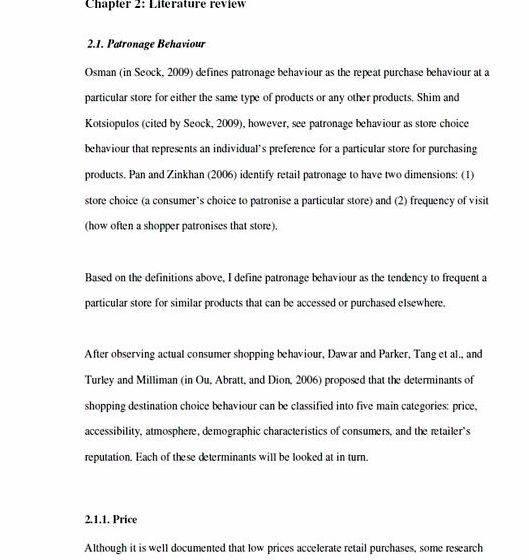
“WOW! The paper looks so great! Can’t believe this is a 24 hours work! I’ll definitely recommend you to my friends for writing service.”
2014-04-27, J.M. USA
“A very good service. Having finished the paper, the writer answered all my questions. Thanks for your hard work and effort. I will definitely recommend masterpapers.com to others.”
2013-07-30, K.H. USA
“Again, another great project you’ve assisted me. The essay was exactly what I was looking for, and it was done professionally and timely. Thanks again and hope to use your service again in the future.”
2013-06-21, T.A. USA
“Thank you very much for helping me with this paper. I’ve submitted it for a revision and will get back to you should there be any changes.”
2012-09-29, R.F. USA
“In general the research paper was a success. I really appreciate your assistance. The paper was well-organized and well-thought. I will definitely use masterpapers.com in the near future and also recommend your services to others.”
2009-11-29, R.B. USA
Features
- Free Revision
- Free Title & References Pages
- Bonuses for Every Order
- Direct Messages to Writer
- 24/7 Support
Order Now ›
A key part of your dissertation or thesis is the methodology. This is not quite the same as ‘methods’.
The methodology describes the broad philosophical underpinning to your chosen research methods, including whether you are using qualitative or quantitative methods, or a mixture of both, and why.
You should be clear about the academic basis for all the choices of research methods that you have made. ‘I was interested ‘ or ‘I thought. ‘ is not enough; there must be good academic reasons for your choice.
What to Include in your Methodology
If you are submitting your dissertation in sections, with the methodology submitted before you actually undertake the research, you should use this section to set out exactly what you plan to do.
The methodology should be linked back to the literature to explain why you are using certain methods, and the academic basis of your choice.
If you are submitting as a single thesis, then the Methodology should explain what you did, with any refinements that you made as your work progressed. Again, it should have a clear academic justification of all the choices that you made and be linked back to the literature.
Common Research Methods for the Social Sciences
There are numerous research methods that can be used when researching scientific subjects, you should discuss which are the most appropriate for your research with your supervisor.
The following research methods are commonly used in social science, involving human subjects:
Interviews
One of the most flexible and widely used methods for gaining qualitative information about people’s experiences, views and feelings is the interview.
An interview can be thought of as a guided conversation between a researcher (you) and somebody from whom you wish to learn something (often referred to as the ‘informant’).
The level of structure in an interview can vary, but most commonly interviewers follow a semi-structured format. This means that the interviewer will develop a guide to the topics that he or she wishes to cover in the conversation, and may even write out a number of questions to ask.
However, the interviewer is free to follow different paths of conversation that emerge over the course of the interview, or to prompt the informant to clarify and expand on certain points. Therefore, interviews are particularly good tools for gaining detailed information where the research question is open-ended in terms of the range of possible answers.
Interviews are not particularly well suited for gaining information from large numbers of people. Interviews are time-consuming, and so careful attention needs to be given to selecting informants who will have the knowledge or experiences necessary to answer the research question.
See our page: Interviews for Research for more information.
Observations
If a researcher wants to know what people do under certain circumstances, the most straightforward way to get this information is sometimes simply to watch them under those circumstances.
Observations can form a part of either quantitative or qualitative research. For instance, if a researcher wants to determine whether the introduction of a traffic sign makes any difference to the number of cars slowing down at a dangerous curve, she or he could sit near the curve and count the number of cars that do and do not slow down. Because the data will be numbers of cars, this is an example of quantitative observation.
A researcher wanting to know how people react to a billboard advertisement might spend time watching and describing the reactions of the people. In this case, the data would be descriptive. and would therefore be qualitative.
There are a number of potential ethical concerns that can arise with an observation study. Do the people being studied know that they are under observation? Can they give their consent? If some people are unhappy with being observed, is it possible to ‘remove’ them from the study while still carrying out observations of the others around them?
Questionnaires
If your intended research question requires you to collect standardised (and therefore comparable) information from a number of people, then questionnaires may be the best method to use.
Questionnaires can be used to collect both quantitative and qualitative data, although you will not be able to get the level of detail in qualitative responses to a questionnaire that you could in an interview.
Questionnaires require a great deal of care in their design and delivery, but a well-developed questionnaire can be distributed to a much larger number of people than it would be possible to interview.
Questionnaires are particularly well suited for research seeking to measure some parameters for a group of people (e.g. average age, percentage agreeing with a proposition, level of awareness of an issue), or to make comparisons between groups of people (e.g. to determine whether members of different generations held the same or different views on immigration).
See our page: Surveys and Survey Design for more information.
Documentary Analysis
Documentary analysis involves obtaining data from existing documents without having to question people through interview, questionnaires or observe their behaviour. Documentary analysis is the main way that historians obtain data about their research subjects, but it can also be a valuable tool for contemporary social scientists.
Documents are tangible materials in which facts or ideas have been recorded. Typically, we think of items written or produced on paper, such as newspaper articles, Government policy records, leaflets and minutes of meetings. Items in other media can also be the subject of documentary analysis, including films, songs, websites and photographs.
Documents can reveal a great deal about the people or organisation that produced them and the social context in which they emerged.
Some documents are part of the public domain and are freely accessible, whereas other documents may be classified, confidential or otherwise unavailable to public access. If such documents are used as data for research, the researcher must come to an agreement with the holder of the documents about how the contents can and cannot be used and how confidentiality will be preserved.
How to Choose your Methodology and Precise Research Methods
Your methodology should be linked back to your research questions and previous research.
Visit your university or college library and ask the librarians for help; they should be able to help you to identify the standard research method textbooks in your field. See also our section on Research Methods for some further ideas.
Such books will help you to identify your broad research philosophy, and then choose methods which relate to that. This section of your dissertation or thesis should set your research in the context of its theoretical underpinnings.
The methodology should also explain the weaknesses of your chosen approach and how you plan to avoid the worst pitfalls, perhaps by triangulating your data with other methods, or why you do not think the weakness is relevant.
For every philosophical underpinning, you will almost certainly be able to find researchers who support it and those who don’t.
Use the arguments for and against expressed in the literature to explain why you have chosen to use this methodology or why the weaknesses don’t matter here.
Structuring your Methodology
It is usually helpful to start your section on methodology by setting out the conceptual framework in which you plan to operate with reference to the key texts on that approach.
You should be clear throughout about the strengths and weaknesses of your chosen approach and how you plan to address them. You should also note any issues of which to be aware, for example in sample selection or to make your findings more relevant.
You should then move on to discuss your research questions, and how you plan to address each of them.
This is the point at which to set out your chosen research methods, including their theoretical basis, and the literature supporting them. You should make clear whether you think the method is ‘tried and tested’ or much more experimental, and what kind of reliance you could place on the results. You will also need to discuss this again in the discussion section.
Your research may even aim to test the research methods, to see if they work in certain circumstances.
You should conclude by summarising your research methods, the underpinning approach, and what you see as the key challenges that you will face in your research. Again, these are the areas that you will want to revisit in your discussion.
Conclusion
Your methodology, and the precise methods that you choose to use in your research, are crucial to its success.
It is worth spending plenty of time on this section to ensure that you get it right. As always, draw on the resources available to you, for example by discussing your plans in detail with your supervisor who may be able to suggest whether your approach has significant flaws which you could address in some way.




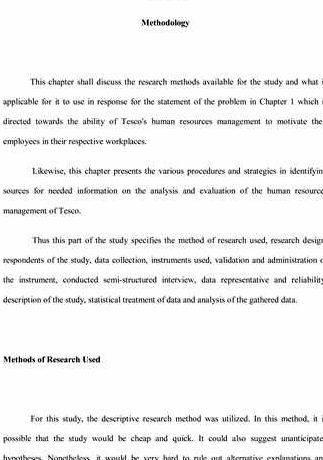

 Time interleaved adc thesis proposal
Time interleaved adc thesis proposal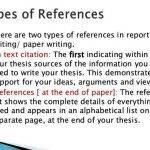 American style of reference writing for thesis
American style of reference writing for thesis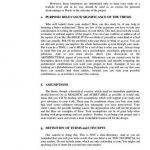 Significance of the study architecture thesis proposal titles
Significance of the study architecture thesis proposal titles Thesis proposal presentation ppt images
Thesis proposal presentation ppt images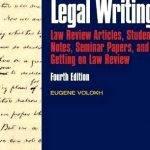 Law review note thesis writing
Law review note thesis writing






